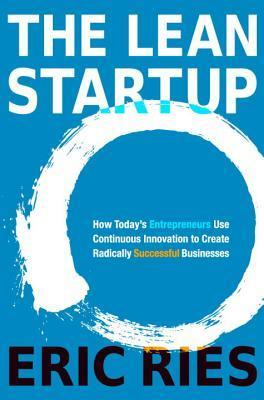More on this book
Community
Kindle Notes & Highlights
by
Eric Ries
IMVU was able to grow by using paid advertising because our customers were willing to pay more for our product than it cost us to reach them via advertising.
my experience, successful startups usually focus on just one engine of growth, specializing in everything that is required to make it work.
need to manage a portfolio of activities, simultaneously tuning their engine of growth and developing new sources of growth for when that engine inevitably runs its course.
This is one of the most important discoveries of the lean manufacturing movement: you cannot trade quality for time. If you are causing (or missing) quality problems now, the resulting defects will slow you down later.
To accelerate, Lean Startups need a process that provides a natural feedback loop.
Adaptive processes force you to slow down and invest in preventing the kinds of problems that are currently wasting time.
When confronted with a problem, have you ever stopped and asked why five times?
Why did the machine stop? (There was an overload and the fuse blew.) 2. Why was there an overload? (The bearing was not sufficiently lubricated.) 3. Why was it not lubricated sufficiently? (The lubrication pump was not pumping sufficiently.) 4. Why was it not pumping sufficiently? (The shaft of the pump was worn and rattling.) 5. Why was the shaft worn out? (There was no strainer attached and metal scrap got in.)
The Five Whys ties the rate of progress to learning, not just execution. Startup teams should go through the Five Whys whenever they encounter any kind of failure, including technical faults, failures to achieve business results, or unexpected changes in customer behavior.
the goal of the Five Whys is to help us see the objective truth that chronic problems are caused by bad process, not bad people, and remedy them accordingly.
Be tolerant of all mistakes the first time. 2. Never allow the same mistake to be made twice.
Intuit uses a tracking survey called the Net Promoter Score2 to evaluate customer satisfaction with its many products. This is a great source of actionable metrics about what customers really think about a product.
My suggested solution is to create a sandbox for innovation that will contain the impact of the new innovation but not constrain the methods of the startup team.
Any team can create a true split-test experiment that affects only the sandboxed parts of the product or service (for a multipart product) or only certain customer segments or territories (for a new product). However: 2. One team must see the whole experiment through from end to end. 3. No experiment can run longer than a specified amount of time (usually a few weeks for simple feature experiments, longer for more disruptive innovations). 4. No experiment can affect more than a specified number of customers (usually expressed as a percentage of the company’s total mainstream customer base). 5.
...more
To combat the inevitable commoditization of the product in its market, line extensions, incremental upgrades, and new forms of marketing are essential.
This may require a different type of manager: one who excels in optimization, delegation, control, and execution.
Some people are natural inventors who prefer to work without the pressure and expectations of the later business phases. Others are ambitious and see innovation as a path toward senior management. Still others are particularly skilled at the management of running an established business, outsourcing, and bolstering efficiencies and wringing out cost reductions. People should be allowed to find the kinds of jobs that suit them best.
How do we know that the problem is due to a special cause versus a systemic cause?
The best way to achieve mastery of and explore these ideas is to embed oneself in a community of practice.
This year marks the one hundredth anniversary of Frederick Winslow Taylor’s The Principles of Scientific Management, first published in 1911.
We can see and feel the waste of material things. Awkward, inefficient, or ill-directed movements of men, however, leave nothing visible or tangible behind them. Their appreciation calls for an act of memory, an effort of the imagination. And for this reason, even though our daily loss from this source is greater than from our waste of material things, the one has stirred us deeply, while the other has moved us but little.1
Peter Drucker said, “There is surely nothing quite so useless as doing with great efficiency what should not be done at all.”2
In the past the man has been first; in the future the system must be first.
Anytime a team attempts to demonstrate cause and effect by placing highlights on a graph of gross metrics, it is engaging in pseudoscience.
our goal should be to change the entire ecosystem of entrepreneurship.
science is one of humanity’s most creative pursuits. I believe that applying it to entrepreneurship will unlock a vast storehouse of human potential.
Andrew Chen’s blog Futuristic Play is one of the best sources for thoughts on viral marketing, startup metrics, and design: http://andrewchenblog.com/
Babak Nivi writes the excellent blog Venture Hacks and was an early Lean Startup evangelist: http://venturehacks.com/. He’s since gone on to create Angel List, which matches startups and investors around the world: http://angel.co/


